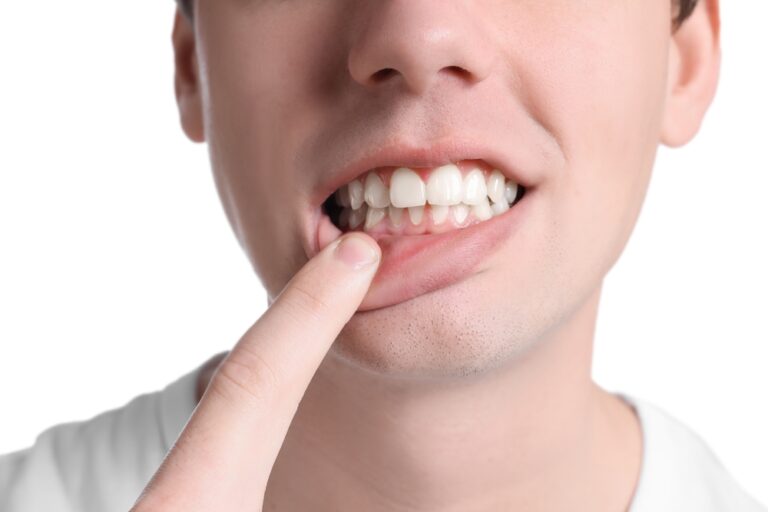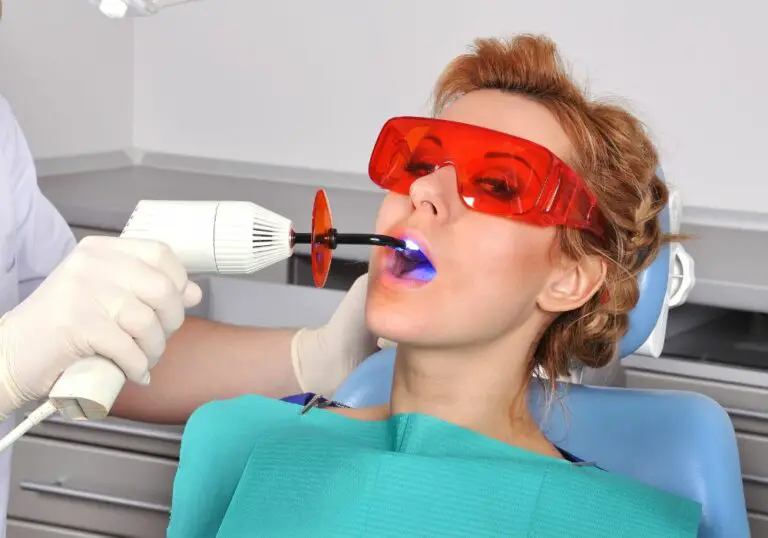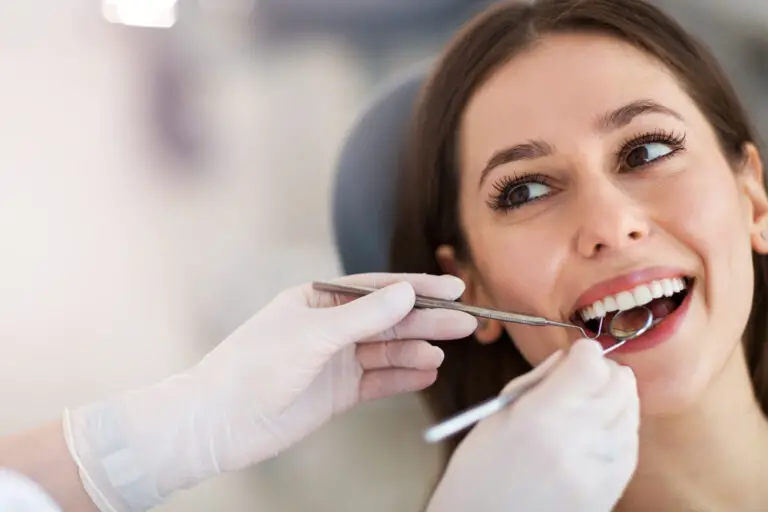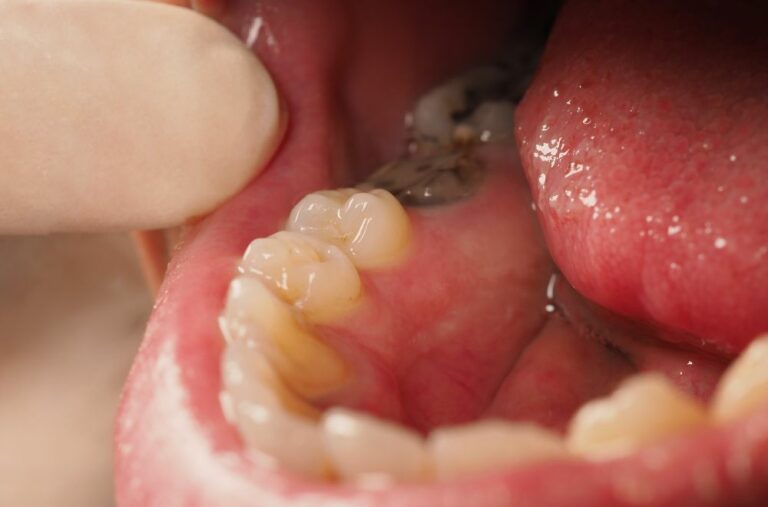Mysterious tooth pain with no obvious dental cause affects many people. You may have experienced it – a painful toothache or sensitivity in a tooth that looks totally normal. Dentists refer to this as idiopathic tooth pain, and it can be extremely frustrating. This article will dive deep into the possible explanations for toothaches where no problem can be found, get to the root of why they happen, and provide tips to alleviate this tricky type of tooth pain.
Dental Causes That Are Challenging to Diagnose
Dentists do their best to thoroughly examine the mouth and teeth to find a cause of tooth pain. However, some subtle dental issues can still be tricky to detect. These hidden dental problems may lead to toothaches yet not show up on X-rays or a visual inspection:
Microcracks
Tiny cracks in the enamel or dentin of teeth are a common culprit of unexplained tooth pain. These microcracks are often caused by chronic clenching or grinding of the teeth. The cracks allow hot, cold, or sweet foods and liquids to penetrate the inner layers of the tooth, causing severe pain from pulp inflammation. However, the cracks can be so microscopic that they are essentially invisible to the naked eye and don’t show up on standard X-rays. Dentists may need to use special magnification, light sources, or staining techniques to uncover them.
Root Sensitivity
Exposure of the root surface due to receding gums can cause tooth sensitivity and pain. When the softer dentin layer on roots gets exposed, its tubules allow external stimuli to reach the inner dental nerves, causing discomfort. Advanced gum recession can be difficult to detect just by looking in the mouth, especially if only a small area of one tooth root is uncovered. Dentists need to thoroughly examine around each tooth and use periodontal probing to measure gum levels.
Loose or Leaking Fillings
Over time, tooth-colored fillings can develop microscopic gaps around the edges of the filling. Bacteria and debris can get under the filling and irritate the inner dental pulp. A loose filling also places more pressure on the tiny ligament fibers surrounding the tooth, causing inflammation. This irritation leads to tooth pain, even though the loose filling may only be slightly moved and hard to visualize.
Irritation Under a Crown
The tissue underneath dental crowns can sometimes become irritated, perhaps due to a small amount of leftover debris or the cement washing out over time. This inflamed tissue then causes pain when biting or chewing. However, the crown itself appears perfectly normal from the visible outer surface, so the irritation can be challenging to diagnose.
Cracked Tooth Syndrome
Cracked teeth that don’t show complete fractures through the full thickness of the tooth may cause mysterious pain. These are essentially incomplete fractures. They allow enough movement of the tooth pieces to irritate the inner pulp tissue, leading to pain coming and going with temperature changes or biting, but don’t separate the tooth completely in two. Identifying these interior cracks requires testing individual teeth.
Nerve and Neurological Sources of Dental Pain
Nerve disorders or damage can make your brain misinterpret sensations from the teeth and gums as severe pain, even when the tissue is normal. This is called neuropathic pain. Conditions causing this include:
Trigeminal Neuralgia
This condition involves abnormal nerve signals being sent by the trigeminal nerve, which carries sensation from the face and teeth. It causes excruciating, stabbing or electric shock-like pain in the teeth or face that comes and goes unpredictably in rapid flashes. Trigeminal neuralgia has no dental cause, but the pain is misinterpreted by the brain as coming from the teeth.
Atypical Odontalgia
This is a neuropathic pain condition resulting from nerve damage to the teeth after a dental procedure. It leads to throbbing, aching, or burning dental pain spreading through multiple teeth, often starting months after a dental treatment like fillings, root canals, or extractions. The damage makes the teeth extremely sensitive to hot and cold temperatures. Exams show the teeth are normal.
Temporomandibular Joint Disorder
Problems where the jaw joint connects to the skull can put pressure on the surrounding tissues, including nerves. This stimulates pain signals that the brain confuses as coming from the teeth, even when the teeth are normal. Pain is typically worse with chewing or movement. Jaw joint issues are often imperceptible just looking in the mouth but require imaging tests to confirm.
Post-Herpetic Neuralgia
In some people, the nerve pain caused by shingles outbreaks in the face persists long after the rash heals. This can cause severe burning, aching, or stabbing pain in the mouth, gums, or teeth. The nerve fibers have become overly sensitive because of lingering damage from the shingles virus. Since the teeth themselves are unaffected, nothing seems wrong.
Referred Pain from Other Areas

Toothaches don’t always originate from dental issues. Pain from problems in nearby structures in the face and head can be misinterpreted by the brain as coming from the teeth. The maxillary teeth in the upper jaw are particularly prone to this.
Sinus Infections
Inflammation or infections of the sinus cavities surrounding the upper teeth can refer pain to those teeth. A persistent sinus infection, sinusitis, or acute sinusitis causes deep, dull pain in the upper teeth that may feel like a toothache. The teeth will appear healthy, with no problems visible on X-rays.
Allergies
Seasonal allergies can also make sinus pressure and pain radiate to the upper back teeth. Congestion and inflammation in the sinuses from allergens irritates those cavities close to the roots of maxillary teeth. Antihistamines and allergy treatments can prove it’s not a dental issue.
Trigeminal Autonomic Cephalgias (TACs)
This group of headache disorders can cause recurring facial and dental pain. Cluster headaches especially generate severe, sharp cheek and tooth pain on one side of the face due to nerves being involved in the TAC neurology. The attacks of facial and tooth pain come and go cyclically.
Ear Infections
In some cases, an inner ear infection can radiate pain to the lower teeth. The nerves for both areas intersect, causing confused signals. The pain may feel like an ache deep in the tooth, worsening when the infected ear is pressed upon. Antibiotics clear up the ear and dental pain.
Psychological Factors Contributing to Tooth Pain
Emotional stress and psychological issues affecting the nerves and brain can translate into phantom tooth pain for some people. Even when nothing is wrong with the teeth, mental health problems may manifest physically as dental pain.
Bruxism
Grinding or clenched teeth due to stress and anxiety wears down tooth enamel, leading to sensitivity and pain. These dental symptoms are made worse by the heightened pain perception triggered by anxiety. The constant pressure on the teeth from bruxism also strains the ligaments around tooth roots, increasing inflammation.
Somatoform Disorders
In conditions like somatization or conversion disorder, emotional struggles are experienced physically as physical symptoms with no underlying medical cause. Toothaches are one manifestation. The neurological glitch that generates these phantom pains is not fully understood. Therapy and anti-anxiety medications help.
Depression
The constant low-level stress and sleep dysfunction associated with major depressive disorder makes the body more sensitive to pain. Nerves can get hyperactive from the chronic stress and fatigue. This amplifies innocuous sensations from the teeth into severe discomfort. Improving mood and rest helps reduce unexplained tooth pain.
Systemic Diseases Causing Tooth Pain

Some chronic conditions disrupt normal neurological signaling between the teeth, nerves, and brain. Though the teeth are physically fine, signals get crossed andtranslated into tooth pain. Systemic diseases with this effect include:
Fibromyalgia
This condition with unknown causes results in amplified pain signals all over the body. It commonly causes teeth to feel tender, achy, and overly sensitive to hot or cold – even when the teeth are perfect. Treating the root fibromyalgia often resolves the tooth discomfort.
Rheumatoid Arthritis
Joint inflammation in rheumatoid arthritis can affect the jaw joint and tissues surrounding teeth. This causes toothaches most noticeable when chewing or biting. X-rays appear normal. Managing rheumatoid arthritis reduces the random tooth sensitivity.
Erythromelalgia
A rare neurovascular disorder, erythromelalgia makes the extremities extremely sensitive and painful to heat or pressure. It can also affect the mouth, gums, and teeth. The teeth hurt intensely when exposed to hot or cold foods but look structurally normal.
Multiple Sclerosis
This disease damages the protective nerve sheaths. Toothaches and mouth pain may come and go unpredictably as part of MS, even without dental disease. They are usually temporary flare-ups that resolve as mysteriously as they started.
Lupus
Systemic autoimmune conditions like lupus cause widespread inflammation that can affect oral tissues. Tooth pain and sensitivity are common symptoms of lupus flares. The teeth appear unharmed, but the fluctuating systemic inflammation causes pain.
When to Seek Dental and Medical Care
Unexplained toothaches always warrant an immediate dental exam to look thoroughly for subtle underlying issues. The dentist has specialized tools and tests to detect problems not visible to the naked eye. If they find no dental cause, prompt medical evaluation is recommended to uncover if other health conditions could be the source of the phantom tooth pain. Sudden severe toothaches or tooth pain accompanied by fever or swelling suggests a dental emergency needing urgent attention. Seeing both a dentist and physician provides the most complete diagnostic picture when dealing with tooth pain for no apparent reason.
At-Home Pain Relief Remedies
While searching for answers about the cause of mysterious tooth pain, you can try some conservative at-home measures to temporarily ease the discomfort:
- Acetaminophen or ibuprofen – These over-the-counter oral pain relievers reduce dental pain and inflammation when taken at the recommended dosage. For adults, acetaminophen doses up to 1000 mg every 6 hours or ibuprofen doses of 200-800 mg every 4-6 hours are generally considered safe for short term use under the direction of a physician.
- Topical anesthetics – Products like Orajel applied directly to the painful tooth can numb sensation temporarily. This can help relieve discomfort from sudden pain episodes or sensitivity to hot and cold. Use sparingly and avoid swallowing large amounts.
- Cold compresses – Applying an ice pack wrapped in a towel to the outside of the aching part of the face helps constrict blood vessels and reduce swelling. Use for 10-15 minutes at a time, being careful not to freeze the skin.
- Warm tea bags – Natural herbs with numbing effects like clove, peppermint, and green tea can relieve tooth pain. Steep a bag in hot water, allow to cool slightly, and hold against the painful tooth for 5 minutes. Tannins in black and green tea may also help reduce inflammation.
- Oil pulling – Swishing a tablespoon of edible oil like coconut, olive or sesame oil in the mouth for 10-20 minutes then spitting it out may have anti-inflammatory, antiseptic benefits to soothe tooth pain. More research is needed on the effects.
- Salt water rinse – Gargling with a glass of warm water mixed with a teaspoon of salt draws out fluid from inflamed mouth tissues, easing swelling and pain.
- Dietary adjustments – Avoiding very cold, hot, sweet, acidic or sticky foods and beverages that irritate sensitive teeth.
Dental and Medical Diagnostic Procedures
Some advanced tests and imaging that dentists or physicians may use to get to the root of elusive tooth pain include:
- CBCT scan – This detailed 3D X-ray view helps dentists see microcracks, subtle pulp inflammation, and other hidden issues not visible on standard films.
- Endodontic testing – Checks tooth pulp vitality and maps out which nerves are involved in the pain.
- Cold sensitivity testing – Applying extreme cold to each tooth identifies those reacting with the most sensitivity, suggesting pulp inflammation.
- Percussion testing – Tapping lightly on teeth identifies lingering pain that indicates problems like abscesses.
- Palpation – Massaging and feeling the facial muscles and joints points to TMJ, sinus, or neuralgia pain sources.
- MRI – Soft tissue visibility helps detect sinus, ear, TMJ, and nerve problems contributing to dental pain.
- Blood tests – Check for inflammation markers and indicators of conditions like lupus, arthritis, or infections.
- Allergy testing – Identifies environmental allergies involving the sinuses that could contribute to tooth pain.
Potential Treatments to Stop Phantom Tooth Pain
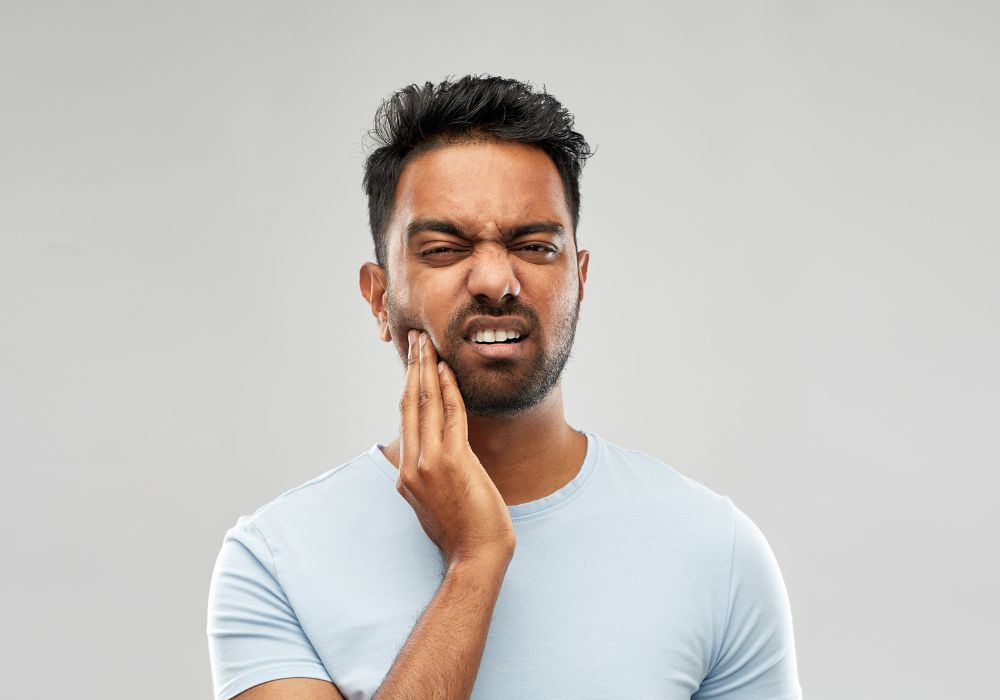
Once the origin of the toothache is discovered, targeted treatment provides relief by addressing the specific underlying cause. Treatments depend on the diagnosed source but may include:
- Fillings or crowns – Cover cracks and damaged areas in teeth
- Root canal – Saves an infected tooth pulp from worsening
- Tooth extraction – Removes non-restorable teeth that cannot be saved
- Occlusal adjustment – Realigns and balances the bite
- Nightguard – Protects teeth from damage caused by clenching and grinding
- TMJ therapy – Treats temporomandibular joint dysfunction with bite splints, physiotherapy, or surgery
- Medications – Antibiotics for infections, steroids for inflammation, anticonvulsants or antidepressants for neuralgia, etc.
- Allergy management – Antihistamines, nasal sprays, or immunotherapy for allergy-related sinus tooth pain
- Stress and anxiety treatment – Therapy, meditation, medication to reduce dental damage from bruxism due to stress
- Systemic disease management – Immunosuppressants for autoimmune disorders, nerve pain pharmaceuticals, etc.
- Alternative pain remedies – Acupuncture, hypnosis, massage therapy, or supplements
Prevention of Unexplained Toothaches
While idiopathic dental pain cannot always be prevented if linked to systemic health disorders, excellent oral hygiene limits dental causes by:
- Brushing gently twice daily with a soft-bristle or electric toothbrush
- Flossing once daily to clear plaque from between teeth
- Seeing a dentist every 6 months for cleaning and examination
- Using a bite guard or nightguard to protect teeth from clenching forces
- Managing stress through exercise, massage, mindfulness, or counseling
- Avoiding chewing on hard items like ice, pens, nails that can damage enamel
- Drinking plenty of plain water instead of sugary or acidic beverages
- Not smoking, as tobacco increases risk for gum recession, tooth decay, and cracking
Getting a Second Opinion for Persistent Mystery Tooth Pain
It’s reasonable to consult another dentist or doctor for a second opinion if:
- The tooth pain persists despite initial treatments
- Different providers cannot determine a cause after multiple exams
- Recommended treatments seem too invasive, don’t make sense, or don’t match your symptoms
- Additional tooth pain, new symptoms, or pattern changes develop
Sometimes a fresh perspective leads to new insights or alternative treatment approaches to properly diagnose and manage challenging phantom toothaches. A multidisciplinary team including your dentist, family doctor, and specialists like endodontists, neurologists, rheumatologists, allergists, and ENT doctors increases the chances of uncovering the culprit.
Conclusion
Toothaches and tooth sensitivity without an obvious dental cause can stem from a range of issues. Cracked teeth, gum recession, TMJ dysfunction, neuralgia, sinus problems, stress overload, and systemic diseases could be to blame for your phantom tooth pain. While frustrating, visiting both dental and medical professionals to methodically rule out possible causes can eventually determine the source. A tailored treatment plan provides pain relief by fixing the specific problem once properly identified. Some trial and error with different diagnostic tests may be part of the journey to solving your mysterious toothaches. But staying patient through the process of elimination helps uncover the pain’s root cause in order to gain comfort when nothing looks wrong.
Frequently Asked Questions About Idiopathic Tooth Pain:
What are the most common causes of tooth pain with no dental issues?
Some of the most frequent reasons behind tooth pain when exams are normal include cracked teeth, gum recession exposing roots, temporomandibular joint disorders, sinus infections, and nerve problems like trigeminal neuralgia.
What does tooth pain from nerve damage feel like?
Toothaches caused by nerve problems may produce burning, shock-like, or stabbing pain. The pain can come and go unpredictably or feel constant. Even light stimulation to the tooth may trigger severe discomfort.
Can you have tooth pain with no cavities?
Yes, it’s absolutely possible. Cracked teeth, receding gums, underlying nerve issues, and assorted dental problems can all cause tooth pain even when no cavities are present.
How can you tell the difference between sinus and tooth pain?
Sinus tooth pain is often dull and throbbing, affecting upper back teeth. It worsens with bending over or sudden motions. Tooth decay pain tends to be sharp with stimuli. Sinus congestion accompanies sinus pain. If unsure, see both a dentist and ENT doctor.
When to see a dentist vs doctor for tooth pain?
Seeing both is best. See a dentist first for a complete dental exam to rule out issues like cracks, pulp inflammation, abscesses, etc. If nothing found, consult a physician to evaluate sinus, TMJ, neuralgia, and systemic disease sources.

